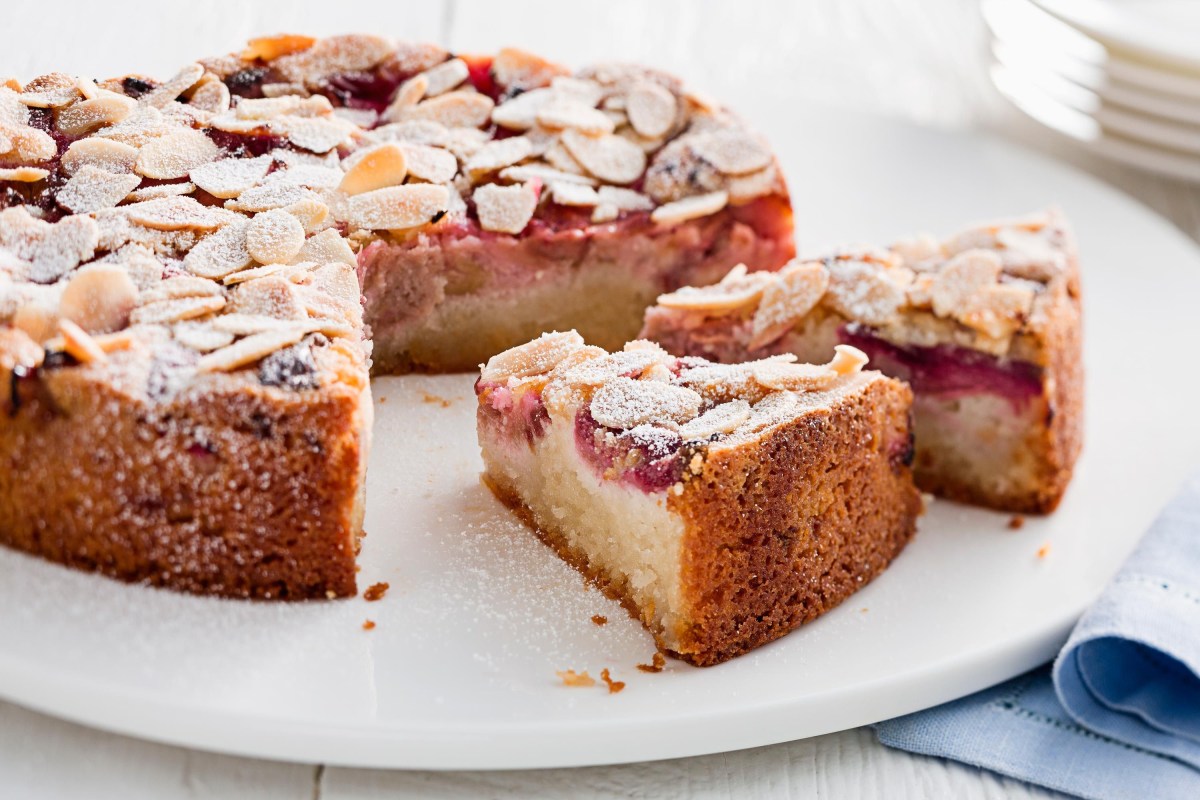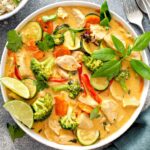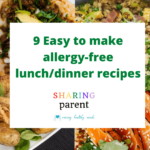Imagine vibrant plates bursting with the sun-drenched flavors of the Mediterranean, yet completely free from dairy, nuts, and gluten. This isn’t a culinary restriction; it’s an invitation to explore a world of delicious possibilities. Discover how simple ingredient swaps and clever techniques unlock the region’s rich culinary heritage, creating dishes that are both healthy and incredibly satisfying, catering to diverse dietary needs without sacrificing taste or visual appeal. Prepare to be captivated by the beauty and simplicity of these allergy-friendly Mediterranean masterpieces.
This guide delves into the heart of Mediterranean cuisine, adapting beloved recipes to be completely dairy-free, nut-free, and gluten-free. We’ll explore a treasure trove of naturally delicious ingredients, unveiling their nutritional benefits and demonstrating their versatility in both simple and more complex dishes. Learn to create visually stunning meals that are as delightful to the eye as they are to the palate, all while adhering to specific dietary requirements.
Advanced Mediterranean Dishes (Dairy-Free, Nut-Free, Gluten-Free)

These recipes build upon the foundational techniques of simpler Mediterranean cooking, incorporating more complex flavor profiles and cooking methods while maintaining a strict dairy-free, nut-free, and gluten-free approach. The focus remains on fresh, vibrant ingredients and the inherent deliciousness of Mediterranean cuisine.
Seafood Paella with Saffron and Lemon
This vibrant paella showcases the bounty of the Mediterranean sea, using saffron for its signature color and aroma, and bright lemon for acidity. The absence of traditional paella ingredients like chorizo (often containing dairy or gluten) is easily compensated for by the intensity of the seafood and the herbaceous notes.
Ingredients:
- 1 tbsp olive oil
- 1 large onion, finely chopped
- 2 cloves garlic, minced
- 1 red bell pepper, diced
- 1 yellow bell pepper, diced
- 1 cup Bomba rice (or substitute with another short-grain rice)
- 1 tsp saffron threads
- 4 cups hot vegetable broth
- 1 lb mixed seafood (mussels, clams, shrimp, cod – ensure no added dairy or gluten in preparation)
- 1/2 cup chopped fresh parsley
- Zest and juice of 1 lemon
- Salt and freshly ground black pepper to taste
Procedure:
- Heat olive oil in a large paella pan or wide, shallow skillet over medium heat. Add onion and cook until softened, about 5 minutes. The onion should be translucent and slightly caramelized at the edges.
- Add garlic and bell peppers; cook for another 5 minutes, until slightly tender. The peppers should retain some bite, not be mushy.
- Stir in rice and saffron threads. Cook for 1 minute, stirring constantly, to toast the rice slightly. This step enhances the flavor and texture of the finished dish.
- Gradually pour in hot vegetable broth, stirring to combine. Bring to a simmer, then reduce heat to low, cover, and cook for 15 minutes, or until most of the liquid is absorbed. The rice should be almost cooked but still slightly firm.
- Add seafood to the paella. Arrange the seafood evenly over the rice. Cover and continue to cook for 5-7 minutes, or until the seafood is cooked through. The mussels and clams should be open, and the shrimp and cod should be opaque and flaky.
- Stir in parsley, lemon zest, and lemon juice. Season with salt and pepper to taste. The bright acidity of the lemon cuts through the richness of the seafood.
- Serve immediately. The paella should be slightly moist, with a slightly firm rice texture.
Roasted Lamb with Rosemary and Lemon Potatoes
This dish showcases a succulent roast lamb, complemented by simple yet flavorful roasted potatoes. The rosemary adds an earthy aroma, while the lemon provides a bright, refreshing counterpoint to the richness of the lamb.
Ingredients:
- 2 lbs boneless leg of lamb, trimmed of excess fat
- 2 tbsp olive oil
- 2 sprigs fresh rosemary
- 1 lemon, zested and juiced
- Salt and freshly ground black pepper to taste
- 1.5 lbs small red potatoes, halved or quartered if large
- 2 tbsp olive oil
- 1 tsp dried oregano
Procedure:
- Preheat oven to 375°F (190°C). Pat the lamb dry with paper towels. Rub the lamb with 1 tablespoon of olive oil, rosemary sprigs, lemon zest, lemon juice, salt, and pepper. Ensure the lamb is evenly coated with the seasoning mixture.
- Place the lamb in a roasting pan. Roast for 1 hour and 15 minutes for medium-rare, or longer for your preferred doneness. Use a meat thermometer to check the internal temperature.
- Meanwhile, toss the potatoes with remaining olive oil, oregano, salt, and pepper. Spread them around the lamb in the roasting pan during the last 45 minutes of cooking time. The potatoes will roast alongside the lamb, absorbing its juices and flavors.
- Once the lamb is cooked to your liking, remove it from the oven and let it rest for 10-15 minutes before carving. This allows the juices to redistribute, resulting in a more tender and flavorful roast.
- Serve the lamb with the roasted potatoes. The potatoes should be tender on the inside and slightly crispy on the outside.
Comparison with Simpler Recipes:
These advanced recipes involve more steps and techniques than simpler dishes. They require more precise timing and attention to detail, such as the gradual addition of broth in the paella and the resting time for the lamb. The flavor profiles are also more complex, relying on layering of spices and herbs to achieve depth and balance. Simpler dishes, while delicious, offer a quicker and more straightforward cooking experience.
From simple, everyday meals to more elaborate culinary creations, this exploration of dairy-free, nut-free, and gluten-free Mediterranean cuisine has revealed a vibrant and adaptable culinary landscape. The journey has highlighted the power of fresh, seasonal ingredients and the artistry of presentation. More than just recipes, this guide offers a gateway to a healthier, more inclusive approach to enjoying the sun-kissed flavors of the Mediterranean, proving that delicious and dietary-conscious cooking can beautifully coexist.
Essential FAQs
Can I substitute ingredients in these recipes?
Absolutely! Many substitutions are possible depending on your preferences and available ingredients. The recipes provide guidance on adaptable elements.
How long do these dishes typically take to prepare?
Preparation times vary depending on the recipe complexity. Simpler dishes can be ready in under 30 minutes, while more advanced recipes might take longer.
Are these recipes suitable for beginners?
Yes, the guide includes both simple and more advanced recipes, catering to different skill levels. Beginners can start with the simpler options and gradually progress.
Where can I find the specific ingredients mentioned?
Many ingredients are readily available at most grocery stores, especially those with international food sections. Specialty stores may carry some more unique items.


